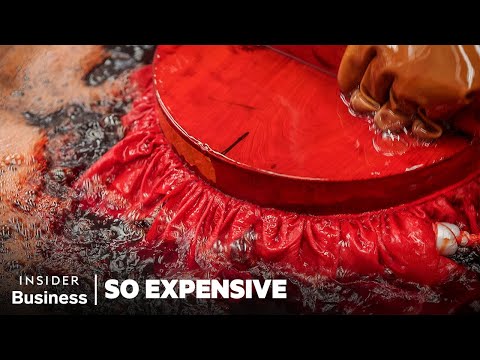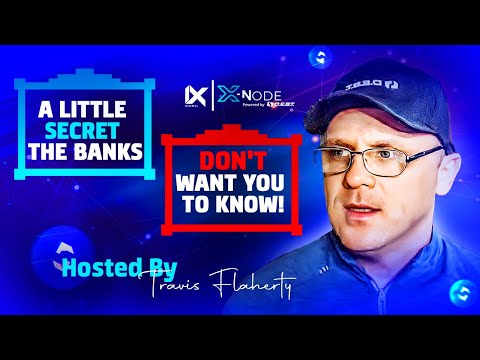Website Marketing Methods and eCommerce Business Models | Network Marketing

Website Marketing and Design, Web Marketing Methods and eCommerce Business Models. These are the topics which we are going to cover in this video. Overview and theories of Web Marketing, eCommerce Business Models, B2C, eCommerce takeoff, Case Study Auto Industry, and Internet Framework.
The web is fundamentally about individuals using a network to assess digital products. Digital Networks individuals are linked to Internet Marketing, basically network marketing. Marketing involves as technology changes, technology innovations brought about the factory system and enabled mass production. Marketing emphasis was on logistics and supply chain
management. Radio enabled national rollout of brands. Marketing emphasis was on selling, television constituted with the product and brand management system of marketing. Mainframe computers enable new methods of segmentation of customer management. The Internet enabled mass customization. Do you Yahoo? For 50% of US web users, yes. A phenomenal eCommerce success story.
Brand extension provides value add for users. Yahoo Games, Yahoo Clubs, Yahoo Chats, Yahoo Auctions, Yahoo Stores, Yahoo Leverages Brands and Ability to draw traffic to generate multiple revenue streams. Most popular websites Yahoo leads. Most popular websites are Yahoo.com, AOL.com, MSN.com, Go.com, and many more, Microsoft.com, etc. Yahoo Brand extension. The success of the Yahoo Brand, Yahoo Store, and many more, Yahoo Sites, etc. Yahoo Games. Website Web Benefits to Friends. The range of Web Benefits business model can be based on improvement in product or service. Business model can be based directly on generating revenue. Let's
take a closer look at these broad classes of business models. Revenue-based business models use the net to make money. Provider-based sponsorship aligns its binary advertisement prospectus fees, sales communication, customer pays, product sales, papers use, subscriptions, bundle sales, closed-loop marketing. These all are the types of network marketing, basically.
Marketing is closed-loop when specific customer responses to specific marketing action can be tracked. For example, if an online ad encouraged website registration, the campaign is closed-loop if user can be tracked from ad exposure to the decision to register. Closed-loop marketing lead to rapid learning. Marketers can experiment with prices, ad copy, and product features
on selected sample of consumers. The impact of closed-loop marketing. On the internet, nobody knows you are a dog. Marketers want two results from user responses. They want consumer to make a choice that leads to information-improved customer satisfaction or transaction. Marketers want to learn about the visitor to the site. First of all, hi, welcome to Butcher's Net. To download Lean Meet recipe, click here. To go there, to the narrow-bone page, click
here. You are a dog. Aren't you? Web change, basically, website change. Our web change is a click sequence. Can be as short as a single click. Can be as long as possible choices on the website. Decision point is equal to event nodes. Ending point is equal
to result node. Common website change, starting points, company, homepage, search engine, or portal, banner ads. Web change of events. Begin, then, this is basically like a flow chart of data flow diagram. There's a begin and end, and all the objects are in there.
Evaluating website change enables marketer to evaluate a wide range of website strategies and tactics, calculate expected value of an impression, expected value of prospect, expected value of a new customer, expected value of a repeat buyer. Web change benefits and probabilities. Five main benefits occur in the chain. Online contribution, the incremental profit from an online sale of a contribution, incremental profit for the sale of product through the standard channel. Add brand impact value to a visitor who sees the add button does not click through. Website brand impact value of a visitor to the website that results in
benefit but not a sale. Lifetime customer value, future value of profit from a new customer. Evaluating web change. Behavior rate and impact rates. On the left side, you are seeing the behavior rates and right side impact rates variable and there are levels. Click through
rate is 2.7%, no notice rate 70%, prospect conservation 15% and many more. On the right side, you are seeing add brand impact which costs $0 and website brand impact $0, offline profit $15, offline profit $23, new customer LTV $125. Cost and performance. This is a table of cost and performance. One of the best uses of web chain analysis is to compare alternative methods of squaring customers. From web change to closed loops, there is a strong connection between web change and closed loop marketing.
A web chain is closed loop if the chain extended from the marketing offer to the desired marketing response. Each step is trackable. The internet can be used to close the loop on traditional media advertising if unique identity fires are included with the ad. Dell newspaper ads contain a unique code.
Website marketing and design. 23.27. Session 4 B2C e-commerce. What is B2C? Business to consumer electronic commerce. E-commerce buying is equal to combines ordering and paying online. Example, a consumer orders an item of close on our website and complete the entire transaction online.
B2C e-commerce takeoff. Consumer spending online is on the rise. There is a table paid for online. $997.1 billion in 1998. $11 billion in growth. 54%. The total is $1997.60 billion in 1998. $77.3 billion in growth. B2C e-commerce takeoff. Own of online consumer spending US. This is the graph. $4.7 billion ordered online paid
for offline. $11 billion paid for online and $363.3 research based online and many more. Read it by yourself. Pause the video. B2C e-commerce takeoff. Business impact on websites. Adding e-commerce raises the stakes e-commerce create incentives
to improve performance and customer responsiveness. Email response time is critical. Web server performance is important. e-commerce site are more responsive. This is a diagram, pictorial diagram for your understanding. Majority of e-commerce sites with one day response.
B2C e-commerce takeoff. E-commerce impact on websites. E-commerce create strong incentive for companies to enhance their online use of personalization. Raises the value of user online experience.
Improves customer loyalty. Allow for detailed information gathering. Personalization e-commerce link is especially strong for business to business marketing. Consumer to consumer commerce. What is consumer to consumer commerce? Consumer to consumer sites must build trust system that rates seller credibility. Verify identifies of buyer and seller.
Insurance against fraud. Scrooze accounts to ensure products are shipped. Bands on seller who bid on their own product. When do not compete the sale. Successful auction sites blur the distinction between business and fun. The pace of e-commerce.
Saving money. The simplest reason to buy online. Regular lower prices and online site can dramatically reduce selling cost for retailers. Competitive pressure keep prices low.
There is a pictorial graph type picture for you for your understanding and compare it with the comparison of best seller prices which are available online. The pace of e-commerce. Saving money. The simplest reason to buy online.
The simplest reason to buy online is to save money. Sale tax is seldom charged on online purchases. Product deliver electronically. Software downloads.
When the merchant does not have a physical presence in the state where the product is delivered. Ship costs vary. Consumer notice and react to the cost of shipping.
Shipping to home address is expensive. Package delivery companies are optimized for delivery. To commercial addresses one large delivery to a retailer is replaced by many small deliveries. The pace of e-commerce. Retailers offer a strong and convenient convenience. Virtually unlimited shelf space 24x7 service.
Convenient for repeat and purchase. One stop shopping. Ability to compare and shop.
Table number 22.6 showing physical retail problems. Top reason site for retail store dissatisfaction. Christmas 1998 can't find 6% 26% parking problem 17% waiting in lines for 13 to 14% crowded merchant 7% Unfriendly staff 7% These are basically the problems of the onsite stores. You cannot have facing this problem online. The pace of e-commerce entertainment. Less developed due to technical issues such as slow consumer access to speed, early display acceptance is adult entertainment which are nearly 1 million in 1998.
Other entertainment forms include auction sites, chat rooms, instant messaging, discussion groups etc. Website marketing and design pointers September 23 to 27. End of the session 3 break. Payment management mechanisms.
Which company bears the risk? Sponsorship, sales payments, banner ads, impression. Prospect fees, click throw, sales commission purchase risk increases for the website being paid. Sponsorship, list, risky, fixed payments. Apprentices, ads, payment depend on impressions. Prospect fees and sales commission depend on success of site and advertiser. The many way to pay online.
Possible payment approaches is L1, L2, L3 and L4. These things are better. Time, impression, result and expenditure. Committing against the net retailer responses to the e-commerce challenge. Selective price discount breaks and mortar merchant can offer discount for product that can also be bought online. Concentrating attention on late adopter of technologies.
Some consumers have a lot of fear and uncertainty about online shopping experience. This slows their defection to new online outlets. Competing against the net retailer responses to the e-commerce challenge. Creating and staging experiences. Compine and glimmer stress that the economy is involving forward experience based value. Retailer's function has less as a seller of product than as a stagers of event.
Extract commodities then make goods and deliver services and state experiences. These are step by step increase in the market to premium pricing. Competing against the net retailer responses to the e-commerce challenge. Click and mortar adopt the internet to create a hybrid system. Bricks and mortar retailer can move certain parts of their retailing function online. Provide a superior way to square customers set up customer relationship.
Create a strong retail brand image. Add the last the online business. Drivers drive business to the physical locations.
Provide 24x7 convenience for the loyal customers. Add new functionality, gift registers and shopping services etc. Bargaining power. Retermine who breaks, who bears the risk. Powerful site shift risk to advertiser and demand.
Sponsors shifts powerful advertisers. Demand accountability and negotiate for prospect fees of a share of transaction revenue. Selecting specific easy opportunities and application. Understand the possibilities of e-commerce. Map opportunities that match current competencies and markets.
Many opportunities to create new product and services. You decide. Pure play versus brick and mortar. 3 dimensions. The product, service, solid, physical and bi-digital.
The process, physical bi-digital. The delivery agent for intermediary, physical, important digital. Traditional e-commerce. All dimensions are physical. Pure EC. All dimensions are digital.
Partial EC. All other possibilities include a mix of digital and physical dimensions. Consumer to consumer commerce. Business deployed chat room technology. Enable consumer to interact directly with each other. Accelerate world of mouth.
Facilitate consumer to consumer commerce. For example eBay, Yahoo auctions etc. The key of success in e-commerce. Battle for providing greatest value and best features from customer perspective. Competitor power exist. Existing competitor and creation of value.
Value chain power exist. Power of supplier. Thread of substitute products.
The trade of substitute product. Trade of new interacts. These are power of customer. These all things are matter in e-commerce control of two power axis. E-commerce cases study. On the left side you are watching the case study the US auto industry profit pool.
This suggests that auto insurance, laws and leasing plans are highly desirable partners for both new and used car dealers. E-commerce case study the auto industry. New intermediators complicate the split of profits between elements of the profit pool. Example online car sale.
The battle for customer taking place during researching and selecting the vehicle. Finding a dealer and price. Choosing financing insurance and warranty. Closing the deal.
E-commerce case study step for online by auto buy. With this watch rated by yourself. Pause the video and this is the case study of e-commerce. Previous slide of buy online car, buy car online. E-commerce case study then this is another example. Previous example continued.
Website marketing and design. Basically this is the last slide of this lecture. I hope you understand the whole concept of network marketing and many other things. E-commerce business model and B2C business. I hope if you want the lecture link and the slides for your presentation and other things.
Then comment below I will provide the link of this presentation and you can use it by yourself. Thanks and comment in the comment section.
2022-12-27 00:53


